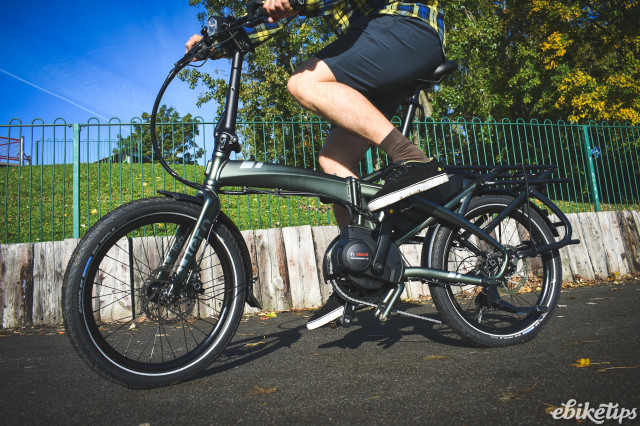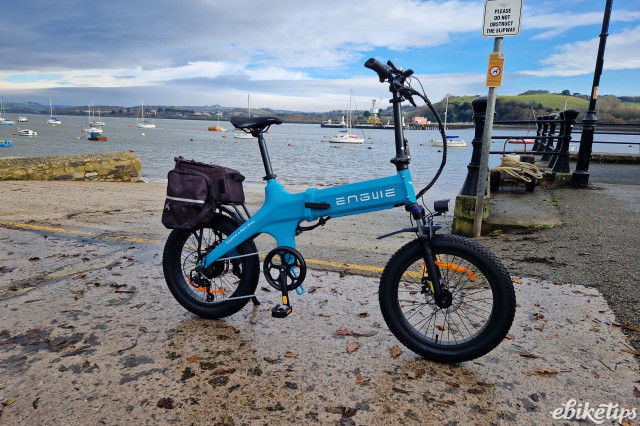This article includes paid promotion on behalf of Tern Bicycles
For many people, running a car is one of their major monthly expenses. You have to insure and tax it, plus there are the fuel costs, and servicing, and repairs… it all adds up. According to research by Kwik-Fit the average cost of running a car in the UK is not far short of £2,000 a year. And that doesn’t even include buying one.
You might have considered whether you can live without a car, and there are many reasons to do that. It might be to save money, or it might be for a healthier lifestyle, or because you’re concerned about the environmental impact of all those engines. Those are all valid reasons to consider ditching your car, or cutting down from two vehicles to one, and an e-bike can address all of them, because they’re a brilliant way to get about. E-bikes are cheaper to buy and run than cars, they’re zero-emission and they’re a more active way of getting about. If you’re looking at going car-free, or just moving from two cars to one, here are some things to consider.
Think about the trips you do
Every now and then you might need to take a bootload of rubbish to the tip, or pick up a new widescreen telly, but the chances are that you spend most of your time doing much more mundane things: going to work, or dropping the kids off at school, or picking up shopping, or nipping into town.
Once you sit down and actually look at how you use your car, you’ll probably realise that the way that you travel is in part dictated by the fact that your car is always available, and there are things you could do to make your journeys more bike-friendly. If you’re riding to work, can you pop into the shops on the way home more regularly, so you don’t have to do a bigger grocery trip as often? If you currently drive to work, is it a short enough journey to do by bike? if not, can you combine a bike trip with the train or the bus?
You’ll need to work out how many of your journeys could be made by bike. But be optimistic: research shows that e-bike riders make longer trips than regular bike riders. If you’re planning to go car-free then you’ll need to be able to cover the large majority of car journeys on two wheels. but if you’re only replacing one of your cars you have a lot more flexibility in terms of the journeys you do by bike.
Get a bike that fits your needs
Once you’ve nailed down what it is you actually need to do, you can look for an e-bike that’ll fit the bill. And the good news is that there’s a massive range of different bikes out there: there’s going to be one that’s right for you somewhere.
Firstly, what do you need to carry? If you’ve looked at what you use your car for and realised that nearly all of the time what you’re carrying is just yourself and a bag of some sort, then pretty much any e-bike will be able to cope with that.
There are other considerations, of course. For example, if you currently commute by public transport but drive to the station, then a folding bike will make a lot of sense: you can take it on the train and use it for both ends of your journey. A folding bike also makes a lot of sense if you don’t have much indoor space to store a bike: you don’t want to be leaving an expensive e-bike locked up on the street in the rain.
If part of your week is filling up a car boot with the family shopping, or moving kids about, then you’ll need something that can cope with more of a load. Generally when we’re talking about bikes that can replace cars, this is the territory we’re in: the territory of cargo bikes.
Cargo bikes come in many shapes and sizes. Long-tail bikes like the Tern GSD above have space behind the pilot for cargo or kids, and they’re often the best compromise between load space and bike size. You’ll see other cargo bikes that are a long-john style, with a bucket on the front, and others with two wheels at the front that are extra-stable for really big loads.
There are other considerations too: is the battery big enough to give you the range you need? is the motor powerful enough to get you and your cargo up the hills on your route? Just as with buying a car, it’s a case of weighing up the pros and cons of all the options, and finding the right balance.
Plan and Practice
If you currently drive to work along a busy main road and you just swap to an e-bike and ride the same route, chances are you won’t enjoy it much. And in a lot of cases, on your bike that route won’t even be the quickest way from A to B. You’ll need to plan a route that’s best for the bike.
It’s a good idea to head out and see what your options are. If you’ve already spent some time cycling around your neighbourhood then you’ll probably already know if there are any short-cuts and traffic-free routes you can use. If you haven’t, then ask any cycling friends in your circle, or join a local cycling group on facebook and ask for advice. People are normally more than happy to help.
There are a bunch of online tools you can use, too. Google Maps, Strava, RidewithGPS and Komoot are all great options for mapping out bike routes. Try a few different options and see what works best for you. Everyone’s idea of what makes the perfect bike route is a bit different.
Be prepared for the weather
You might be surprised by how much of the time you’ll be riding in the dry if you commute every day. On showery days you’re likely to miss the showers, especially if you can be flexible with your leaving time. A rain radar app on your phone can be really handy if you want to dodge the downpours. setting out 10 minutes earlier or later can make all the difference.
That being said, there will be some days when the weather sets in and there’s nothing for it but to head out into the rain. If it’s warm and wet then you can just take a change of clothes with you. put them inside a plastic bag in your rucksack or pannier if it’s really grim out, and don’t forget dry socks and underwear! If it’s cold then it’s better just to layer up with a good waterproof coat and some overtrousers. Your feet will still be exposed, so keep your work shoes in a bag and wear something waterproof on your feet. Walking boots are good, and wellies are cheap and effective too. On an e-bike you’re not working as hard and you won’t get as sweaty, so prioritise water resistance over breathability when you’re looking at coats and trousers. That often means that cheaper waterproofs will be just as effective.
If you’re carrying kids then it can be a bit miserable for them if it’s really wet. Again, waterproof tops and overtrousers are ideal. Some bikes can offer even more protection: Tern now offer the Clubhouse fort accessories with the GSD, making a fully enclosed space which means at least the kids can stay dry even if you’re out in the rain up front. There are other cargo bikes that offer similar kid spaces at the front, too.
Even if it’s not raining when you ride, be aware of weather conditions. If the roads are wet because it’s been raining heavily the spray from the front wheel can make a mess of your work clothes and shoes. Make sure your bike has good mudguards, and you might want to sling on the overtrousers too as a precaution.
You can still use a car!
Replacing a car with an e-bike doesn’t mean you can’t ever drive again. Sometimes you’ll need to do something that you can’t do on your bike, and that’s often the reason people will argue that they need a car. But in reality most journeys are easily done on two wheels, and research shows that private cars spend an average of 95% of their life doing nothing.
And if you really need a car for a certain job, then there are car-share clubs in most major UK cities now where you can pay a one-off or yearly fee and then have access to vehicles in the city that you pay for by the hour. If it’s only going to be a handful of times a year that the bike won’t do the job, then you can just hire a car or a van when you need one, which will probably work out even cheaper.









